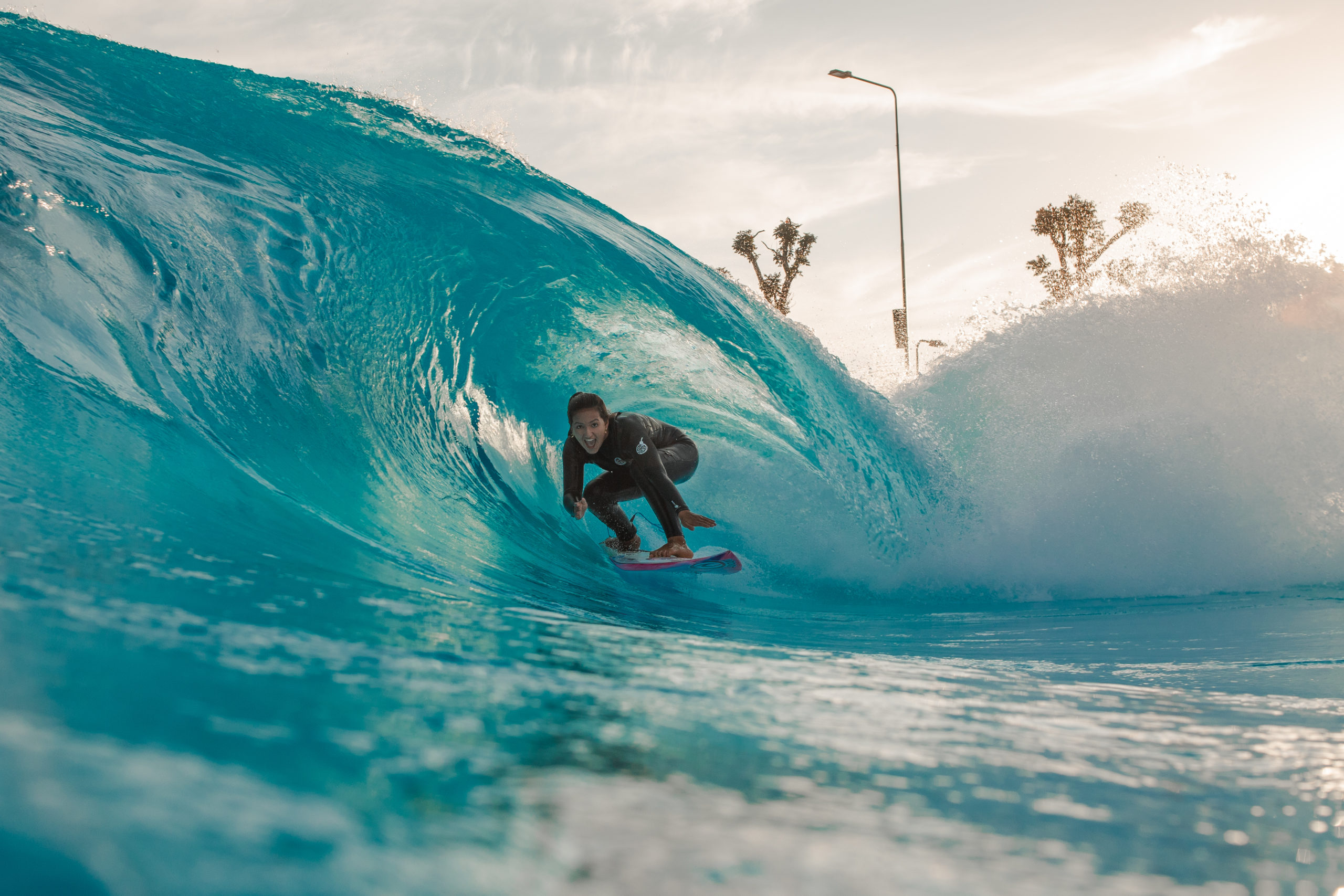
A world first in the surf park sector, Wavegarden provides complete transparency by disclosing precise technical information – including the number of waves per hour, quality, height, ride time, speed options and energy consumption – for each wave on its diverse Wave Menu, which has more than 20 options.
This information allows potential surf park investors and surfers themselves to make a veritable analysis and comparison of different wave generation systems and evaluate the advantages of Wavegarden’s technology. While this sets a high industry precedent, new waves are forecast to be released in the coming days.
Apart from having the greatest variety of waves, the Wavegarden Cove offers the highest quantity of waves per hour for a given wave quality, coupled with the maximum capacity of users in the smallest footprint. Compared to other systems, a one-hour session in a Wavegarden Cove produces up to 4 times more waves per m2 of the same quality. This is not a supposition; it is a fact.
This claim is verified by contrasting the waves/hour vs area (m2) of two public wave pools currently in operation without Bays (initiation zones). The analysis compares waves of the same length, height and quality. While a Wavegarden Cove lagoon spanning 8,000m2 can produce 250-300 full size waves/hour of constant quality, and as many as 700 Malibu style waves/hour. In contrast, surf parks that are not powered by Wavegarden´s technology can only produce 110 waves per hour with a lagoon size of 12000 m2, and 70 waves/hour in 6000 m2.
„We understand the importance of high surfer capacity and this can only be achieved by producing the maximum possible number of waves per hour, while maintaining their quality,”said Josema Odriozola, CEO and Founder of Wavegarden
“To date, no other tech has come close to creating the number of good waves per hour that the Wavegarden Cove generates. Further, our system is versatile, the variety of different waves we can create is almost infinite.”
Although our technology can create an unlimited variety of types and shapes of waves, standard facilities are delivered with 20 different waves for first-timers through to elite competitors preprogrammed into the control system.
Our Wave Menu includes 6 wave categories: Bays, Waikiki, Malibu, Turns, Barrels, and Airs. Each wave type comes in 3-4 different sizes and 2-3 different peeling speeds. This variety is essential for the development of surfing skills for learning, cruising, open-face manoeuvres, tube riding, and aerials. This helps to establish a pathway of progression and encourages repeat visits. It also provides complete flexibility for private ‘a la carte’ sessions and surf competitions.
Characteristics of the wave categories of our Wave Menu:
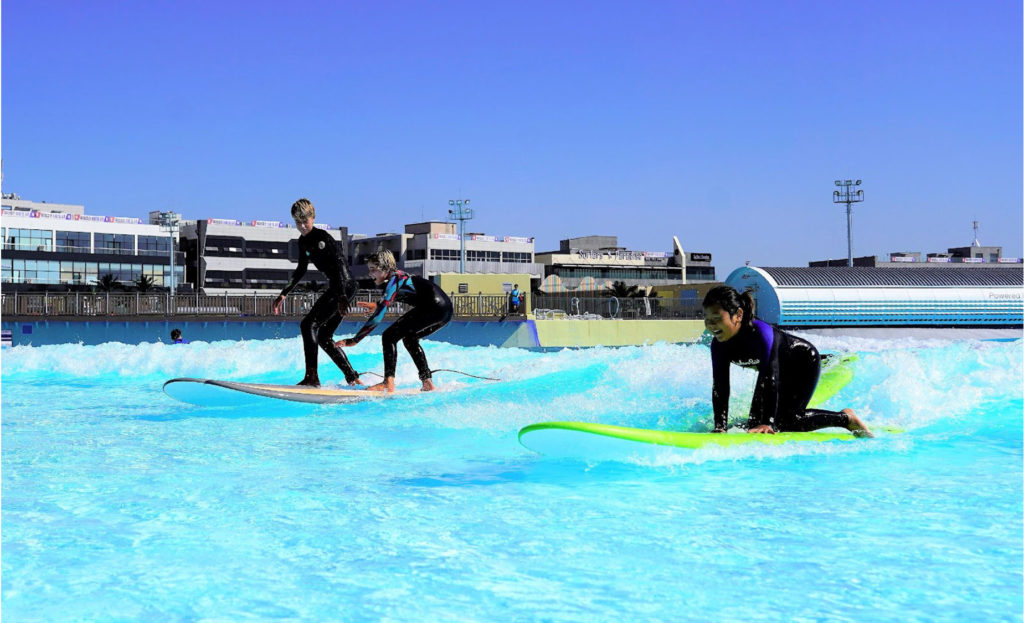
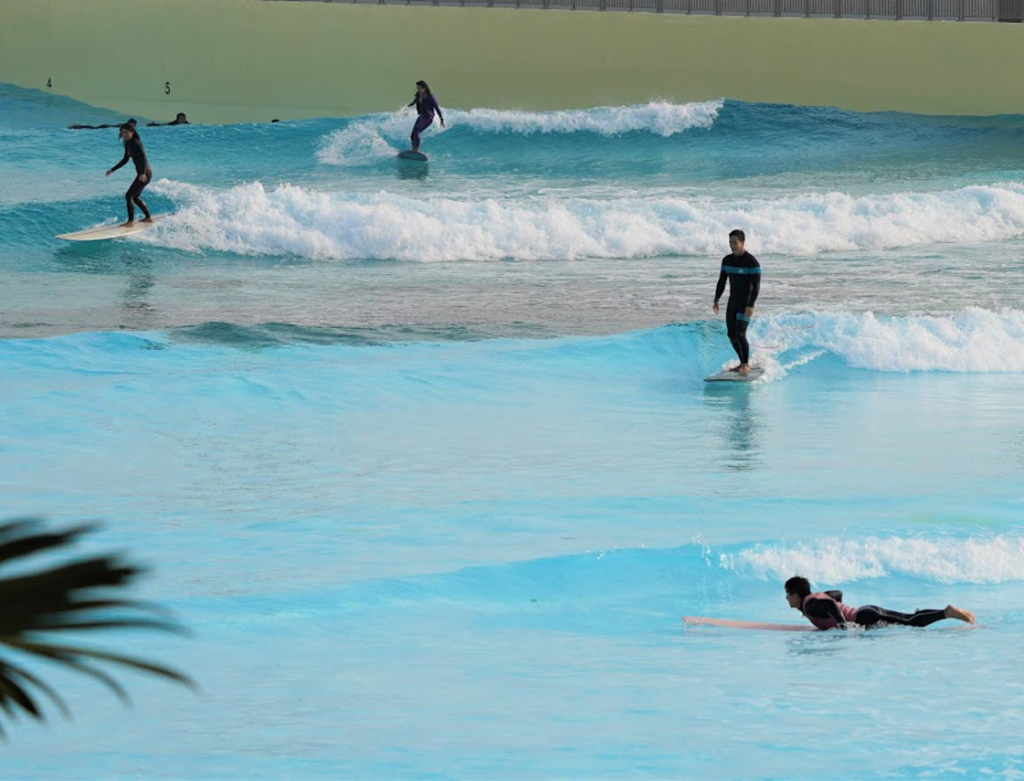
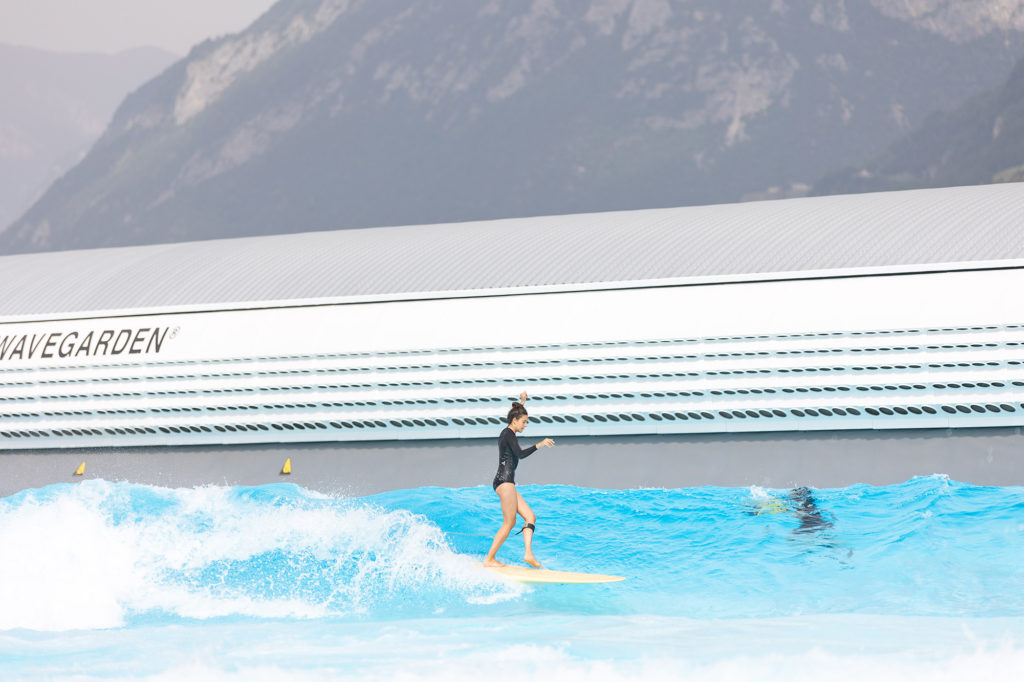
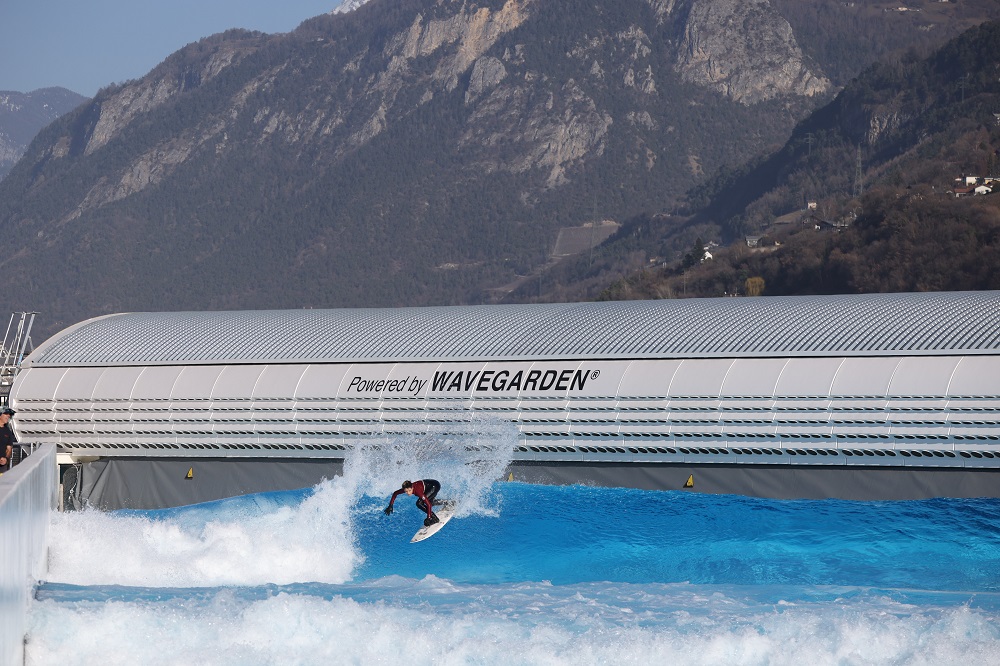
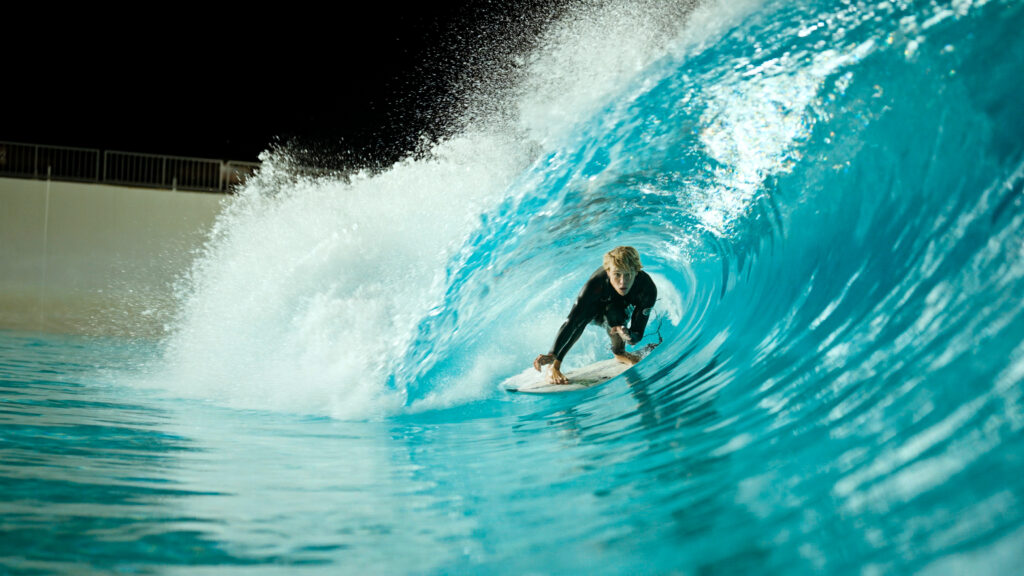
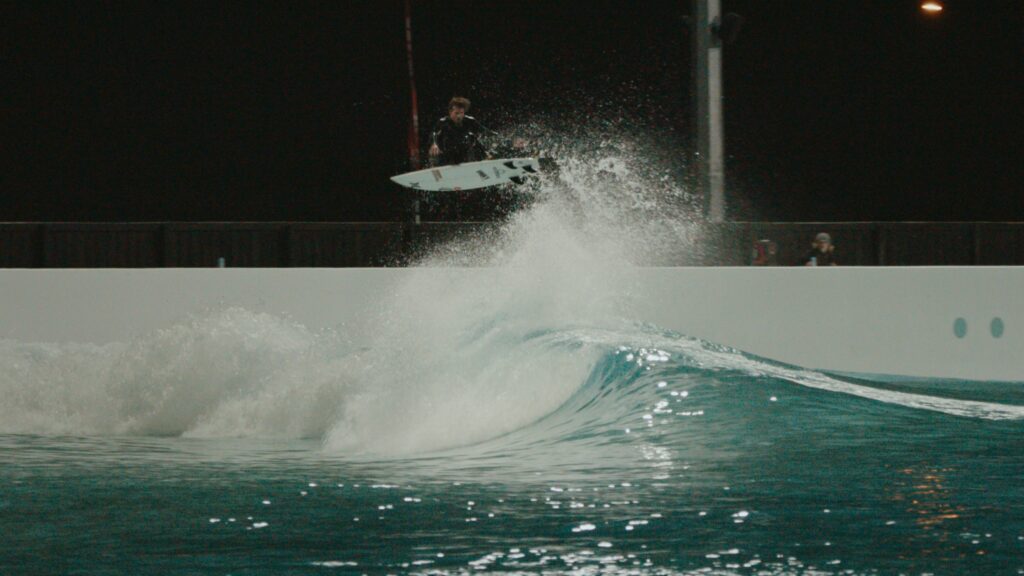
„We offer 7 different sessions structured according to our customers‘ level,“ explained Adam Bonvin, CEO and Founder of Alaïa Bay in Sion, Switzerland. „And each session has 2-3 different waves, which vary in terms of intensity. This allows surfers to warm up and then really start progressing. Then we realized we were missing a particular wave on our Wave Menu – the jump between Malibu and Turns waves was too big for our customers,“ said Bonvin. „So, we worked with the guys at Wavegarden to design a new wave called Malibu 5, which has now become our most popular one.“
It is not uncommon in the wave technology sector to see exaggerated wave quantity figures. We are transparent about providing the precise number of new waves, or swells, produced by the machinery during a 1-hour session. Although one wave may break in 4 different areas of the surfing lagoon as it moves shoreward, we do not multiply this count by 4. Instead, we quote the precise number of waves (swells) created by the machine and not the number of rides by individual surfers.
The number of waves per hours is what determines the maximum number of users per hour. Not surprisingly, there is a direct correlation between wave quantity and wave quality. The more waves that are created, the lower the wave quality due to increased currents. Therefore, we publish every wave type in the Wave Menu with 3 different frequency settings (nº waves/hour):
The data furnished by Wavegarden is based on the actual operational performance of four commercial facilities, with various wave machine sizes. These include Alaïa Bay (Switzerland); and URBNSURF (Australia) that have 46 modules; Praia da Grama (Brazil) that has 52 modules, and Wave Park (South Korea), which has 56 modules.
The number of quality waves produced per hour is the single most important factor in the profitability of a surf park. For the past 10 years, Wavegarden engineers have undertaken exhaustive research to understand how to find the perfect balance between bathymetry design, lagoon size, and the quantity and quality of waves.
Proof of the superiority of Wavegarden’s technology is its 7 facilities operating successfully around the world, the 7 surf parks currently under construction on 4 continents, and the more than 60 projects that are under development and financially committed.